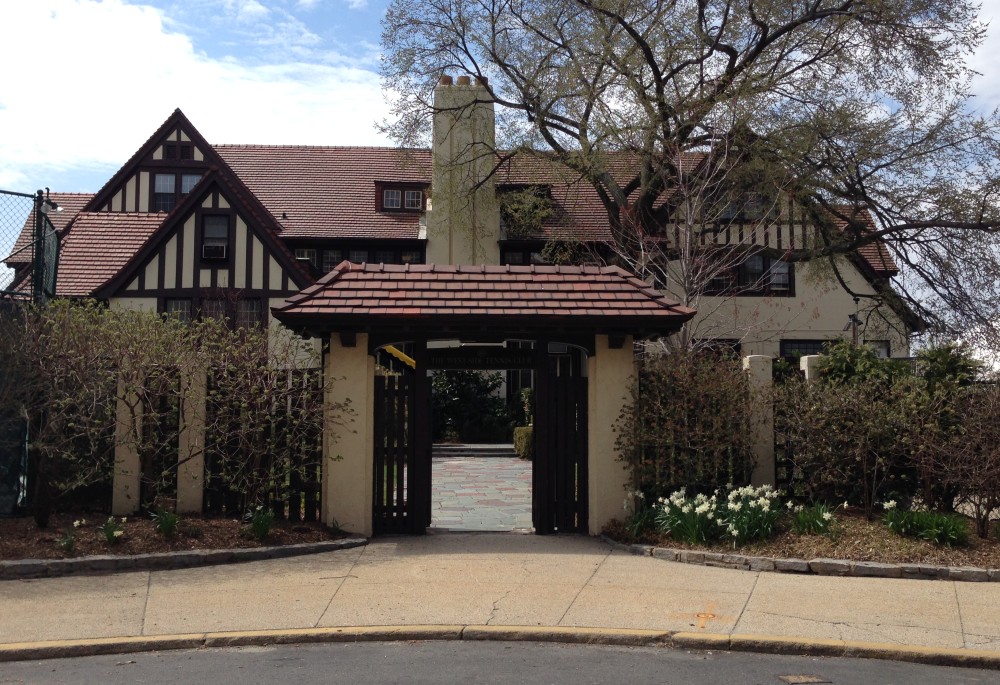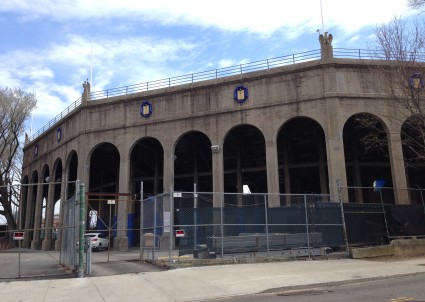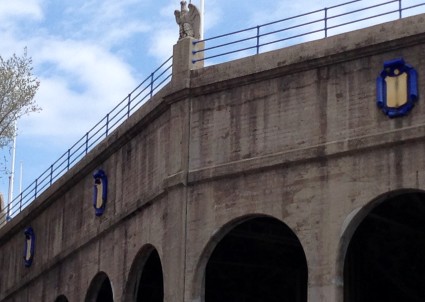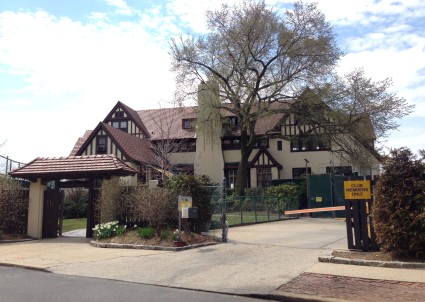West Side Stadium (now Forest Hills Stadium), Clubhouse and stadium
Clubhouse- Grosvenor Atterbury and John Almay Tompkins, 1913
Stadium- 69th Avenue between Clyde Street and Dartmouth Street, Kenneth M. Murchison, 1921-23
This internationally renowned tennis stadium is most famous for hosting the United States National Championship tennis tournaments, which were combined in 1968 to become the U.S. Open, from 1915 until 1977, when the tournament moved to the Arthur Ashe stadium in Flushing Meadows-Corona Park. The West Side Tennis Club was established in 1892 and originally operated on Central Park West in Manhattan, giving the club its name. The clubhouse was designed in the neo-Tudor style, in keeping with Atterbury’s other work in Forest Hills. The 14,000-seat stadium was designed by Kenneth M. Murchison, a well-known architect of public institutional buildings, having also designed such distinguished structures as Penn Station in Baltimore and the Hoboken Terminal. The United States’ first concrete tennis stadium, its architectural features include blue and gold glazed terra-cotta shields bearing the WSTC logo and “1923″, archways, eagles, shields, flagpoles and cornices. In 1956, the stadium hosted a major turning point in American history, when Althea Gibson became the first African American woman to compete in a world tennis championship (she won the Grand Slam). The stadium also served as a performance venue from the 1950s to the 1990s (Frank Sinatra, The Beatles, The Rolling Stones, Barbra Streisand and Bob Dylan, to name a few). In 2013, after many years of neglect, the West Side Tennis Club began an overhaul of the structure to restore it for use as a music venue once more. Turn left onto Dartmouth Street to make your way back to Station Square, noting the lovely streetscapes along the way.




